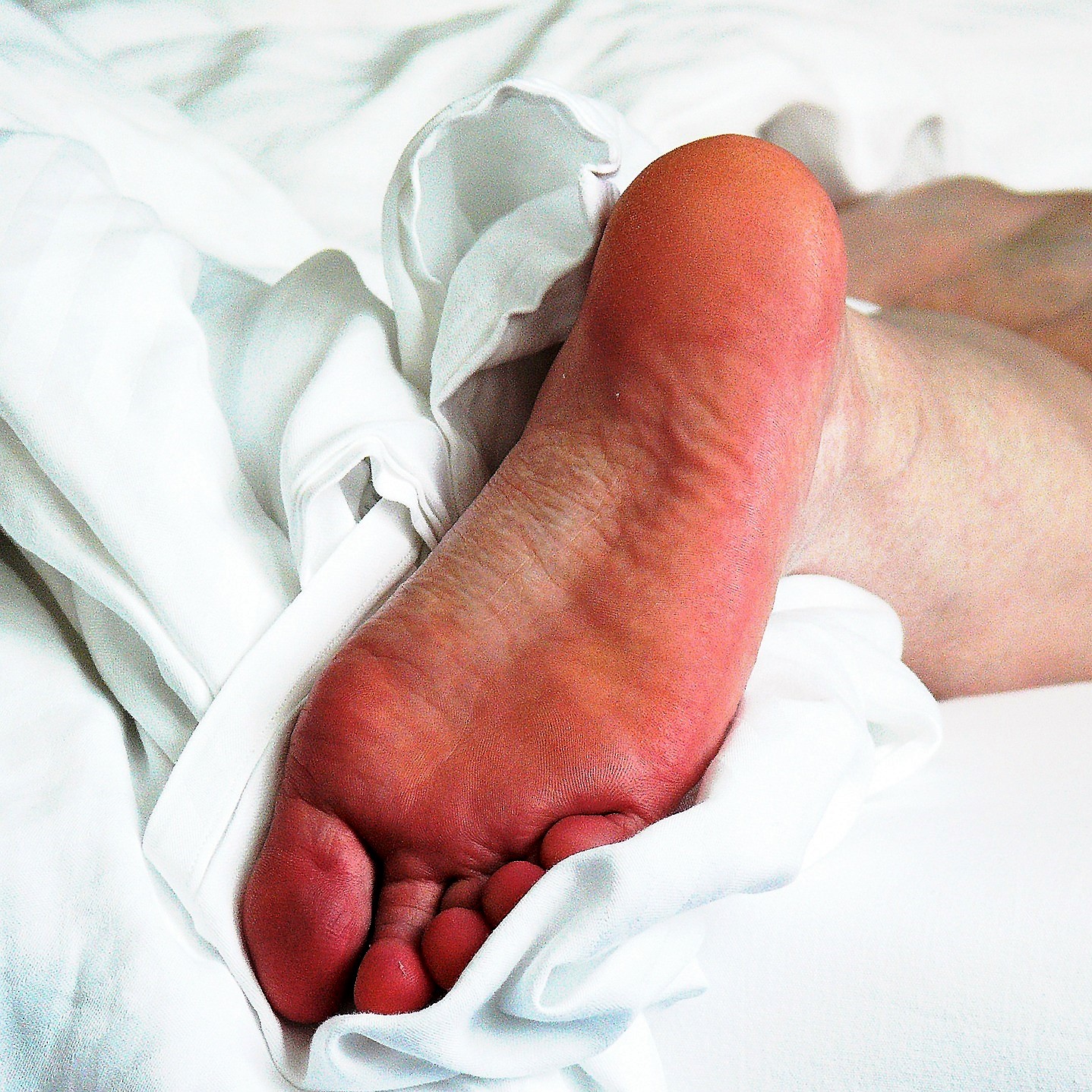Strength training reduces pain for people with plantar fasciitis
Plantar fasciitis is a common cause of inferior heel pain. Plantar fasciitis is characterized by increased thickness of the plantar fascia (flat band of tissue that connects the heel bone to the toes), and pain in the bottom of the foot near the heel. The prevalence in the general population range from 3.6% to 7.0 % . It accounts for approx. 8% of all running-related injuries. Results from several studies suggest that plantar fascia-specific stretching, as well as strength training, are effective treatments.
It is a common problem to still suffer from pain 2 years post diagnosis. Focus is now on finding better treatments. A randomized controlled study investigated the effectiveness of shoe inserts and plantar fascia-specific stretching vs shoe inserts and high-load strength training consisting of heel raises in people with plantar fasciitis. The study had a total of 48 participants, randomized into two different groups. The first group did high-load strength training consisting of unilateral heel raises with a towel underneath the toes to further stretch the plantar fascia.
The second group did plantar fascia-stretching, using the hands to flex the foot and the toes. Both groups received heel inserts. Participants who did strength training were instructed to perform the exercise every second day for 3 months. They started at 3 sets of 12 repetitions. The load was increased by adding books in a backpack which they carried during the exercise. They kept adding books to the backpack as they became stronger. The second group was instructed to stretch the plantar fascia at 10 sets of 10 s each, three times a day.
Studie outcomes
The primary outcome was a self-reported questionnaire (FFI) that assessed foot function, pain, disability, and activity limitation. The lower the score the less pain and disability the person experienced. By the 3 months follow up the strength group had an FFI-score of 29 points lower compared to the stretch group. They were generally also more satisfied with the results of the treatment. There were no significant difference between the groups during the 6 and 12 months follow-up, although the FFI-score dropped for both groups.
Both groups had a significant reduction in the thickness of the plantar fascia, without any significant difference between the groups. In conclusion, an exercise protocol consisting of high-load strength training resulted in superior foot function and reduced pain at 3 months compared with plantar specific stretching. However, in the long run, both stretching or strength training will probably speed up the rehab process compared to no intervention at all.
Understanding the Causes and Treatments for Red Bottom of Foot
The appearance of a red bottom of the foot can be concerning and may indicate various underlying issues. This section explores common causes, symptoms, and potential treatments to help you understand and address this condition effectively.
Common Causes of Red Bottom of Foot
There are several reasons why the bottom of your foot may appear red. Some of the most common causes include:
- Allergic reactions: Contact with irritants or allergens can lead to redness and inflammation.
- Infections: Bacterial or fungal infections, such as athlete’s foot, can cause redness and discomfort.
- Skin conditions: Conditions like eczema or psoriasis may manifest as red patches on the feet.
- Circulatory issues: Poor circulation or conditions like diabetes can lead to changes in skin color.
- Injury: Bruises or trauma to the foot can result in localized redness.
Identifying the specific cause of the redness is crucial for determining the appropriate treatment. If the condition persists or worsens, it’s advisable to consult a healthcare professional.
Treatment Options for Red Bottom of Foot
Treatment for a red bottom of the foot will depend on the underlying cause. Here are some common approaches:
- Topical treatments: Over-the-counter creams or ointments can help alleviate symptoms related to infections or skin conditions.
- Antihistamines: If the redness is due to an allergic reaction, antihistamines may provide relief.
- Proper hygiene: Keeping the feet clean and dry can help prevent infections and reduce irritation.
- Footwear choices: Wearing well-fitting shoes and moisture-wicking socks can minimize friction and irritation.
- Medical intervention: In cases of severe infection or persistent symptoms, a doctor may prescribe antibiotics or other medications.
It’s essential to monitor any changes in your symptoms and seek medical advice if you experience severe pain, swelling, or fever, as these could indicate a more serious condition.
Post provided by Maria Ekblom, a member of #teamEBT, licensed physiotherapist and personal trainer.
Source:
Rathleff M, Mølgaard C, Fredberg U, Kaalund S, Andersen K, Jensen T et al. High-load strength training improves outcome in patients with plantar fasciitis: A randomized controlled trial with 12-month follow-up. Scandinavian Journal of Medicine & Science in Sports. 2014;25(3):e292-e300.




